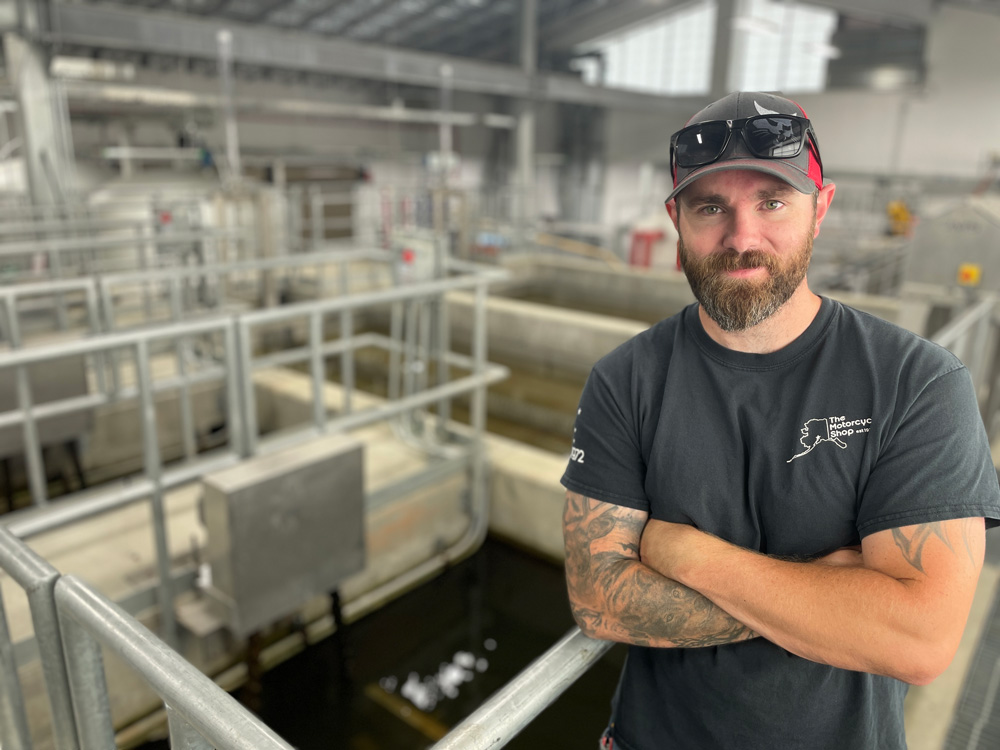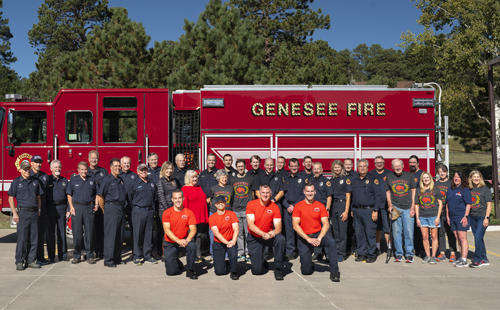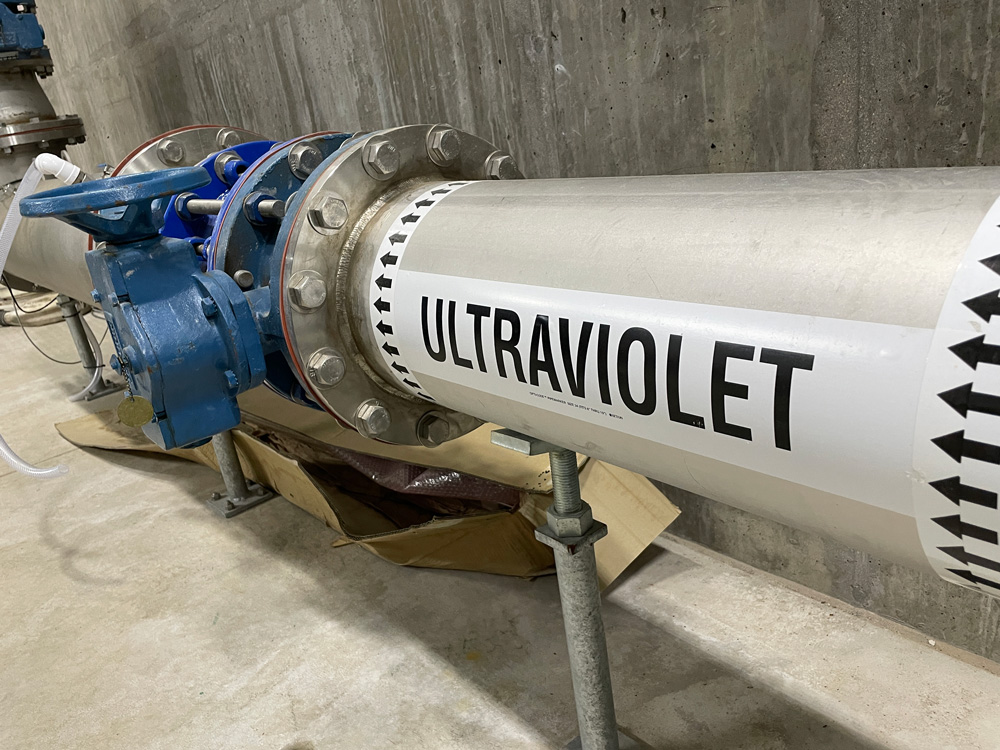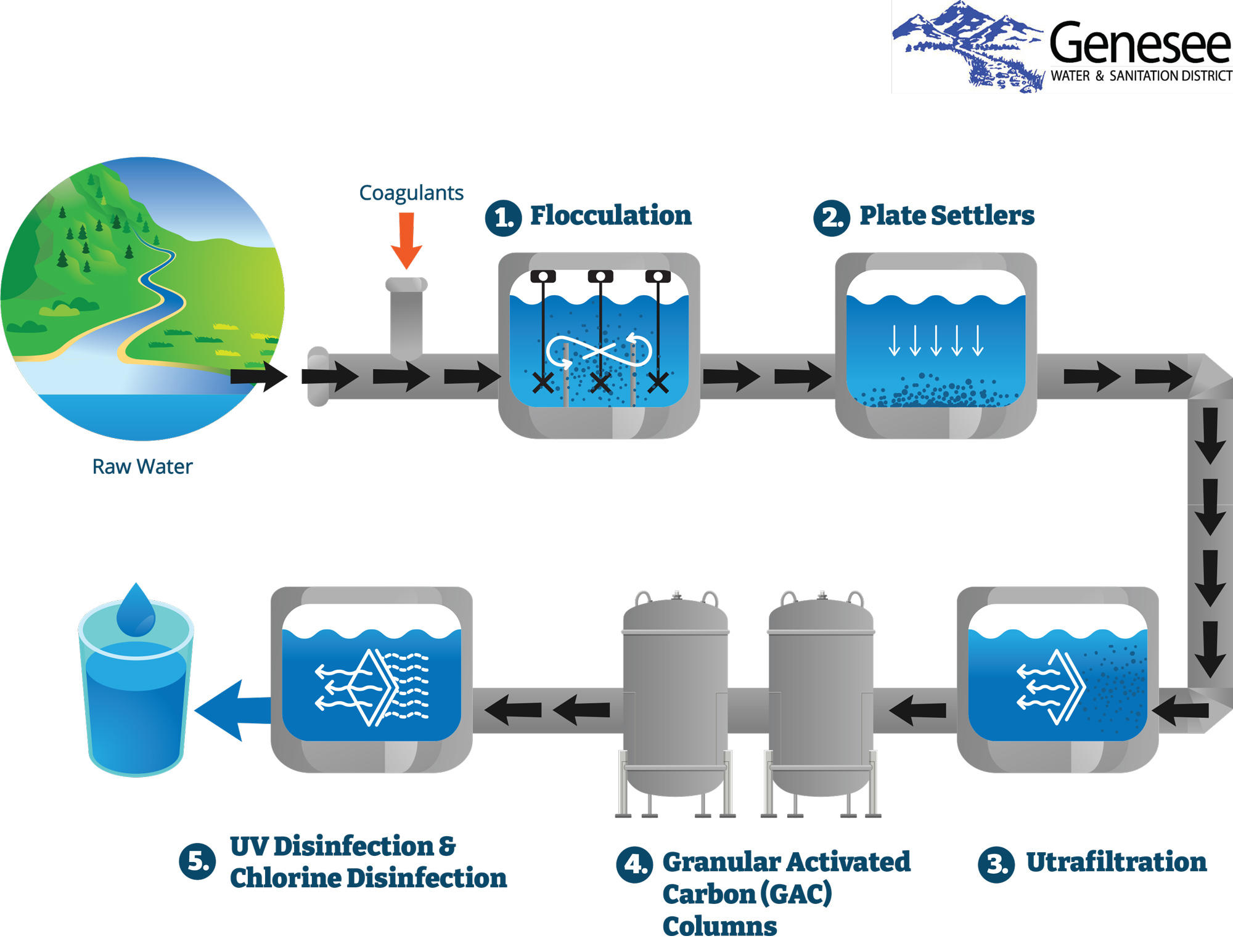What We Do

Overview
Genesee Water and Sanitation District, or GWSD, provides water and sewer services to Genesee Foundation, Genesee Village, Chimney Creek, and The Town Center, as well as The Crossings, Ralston Elementary School and Rockland Church north of Interstate 70.
The Genesee Water and Sanitation District was created in 1973 and currently services a population of about 3,920 people. Genesee water is fed to 1,440 total users, which includes single-family homes, condos and other end-users like churches, a school, commercial buildings, clubhouses and a fire station.
The Genesee Water and Sanitation District is a “special district” in accordance with Colorado’s “Special District Act” known as Title 32, Article 1. Special districts are a type of local government and include fire protection districts, sanitation districts, and park and recreation districts, among others. There are 2,917 special districts in the state, and the Genesee Water and Sanitation District is one of 120 water and sanitation districts in Colorado, according to the Colorado Department of Local Affairs.

People
GWSD earned the Colorado Rural Water Association's “Water System of the Year” in 2017, runner-up for the “Water Taste Test” in 2019, and winner of the "Water Taste Test" in 2024. And that’s because of our staff. So, maintaining a high standard is the norm. All employees are trained and certified, all experts in their respective fields. In this career field, the best begets the best, and GWSD has the best equipment and the best talent — not to mention one of the most beautiful parts of America to operate.

Monitoring
We monitor the water 24/7 every day of the year in strict compliance with federal and state regulations. We test the water in our lab before it enters the plant, while it’s in the plant, and as it exits the plant. We check and test water at eight stations — four water and four waste-water stations — located across Genesee. We monitor maintenance pressures across the entire system, safeguard disinfection standards, and ensure turbidity levels (i.e. particles in water) are low. Additionally, we provide daily maintenance to our equipment, the pipes, and sewers.

Cybersecurity & Physical Security
We have a strong defense against cyber threats. Our cyber security programs protect our software, infrastructure, and finances. And our physical security practices include cameras to safeguard our facilities. What’s also important is that we train for real-world incidents. We’re prepared for crisis. We have emergency response plans in place, including backup systems, to ensure a continuous supply of safe drinking water. Receive news and alerts via email or text HERE.

Partnerships
GWSD has a long history of getting work done with partners across all jurisdictions. That includes neighboring fire protection districts, government agencies, first responders and other water districts. Our partnerships give us a leg up on a coordinated approach to water security. For example, we work with the neighboring city of Evergreen to provide a coordinated response to any accidents on Highway 74 near our reservoir.

Manage State-of-the-Art Plants
GWSD's water treatment plant uses a ‘state of the art’ process with built-in redundancies that make us unique. Our water exceeds all the standards set by the state of Colorado and the federal Safe Drinking Water Act.
1. Flocculation
Flocculation is a step in water treatment where we add a special substance, called a flocculant, to the water. This substance acts like a magnet that attracts all the tiny, invisible particles floating in the water, like dirt or dust. These particles stick to the flocculant and form larger clumps. Because these clumps are heavier, they settle down to the bottom of the water container. This makes it easier to remove the dirt and leaves the water much clearer. Essentially, it's a way to gather up all the unwanted particles so they can be taken out, leaving the water clean.
2. Plate Settlers
Plate settlers are devices used in the water treatment process to help remove particles from water more efficiently. They consist of a series of inclined plates arranged within a large tank. As water flows upward between these plates, the particles in the water, which are heavier than water, settle onto the plates due to gravity. These particles slide down the plates to the bottom of the tank because of the angle of the plates. This setup increases the area available for settling, making the process faster and more effective. In simple terms, plate settlers act like slides in a playground, guiding dirt particles out of the water and down into a collection area so that the water becomes cleaner as it moves upwards.
3. Ultrafiltration
Ultrafiltration is a water purification technique where water is pushed through a very fine filter, similar to a super-tiny sieve. This filter is so small that it can trap tiny particles and even some bacteria and viruses that are invisible to the naked eye. As water passes through this special filter, all the unwanted substances get caught in the sieve, allowing only clean water to go through. This method is effective for removing impurities and making the water safer to drink. In essence, ultrafiltration acts like a microscopic security gate that only lets the clean water pass through while stopping contaminants in their tracks.
4. Granular Activated Carbon (GAC) Columns
Granular Activated Carbon (GAC) columns are used in water treatment to improve water quality by removing unwanted chemicals, tastes, and odors. These columns are filled with small, black grains of activated carbon, which is a special kind of charcoal that has been treated to have a lot of tiny pores. As water passes through these columns, the carbon acts like a sponge, soaking up contaminants such as pesticides, PFAS and organic compounds. This happens because the contaminants stick to the surface of the carbon grains, trapping them. The result is cleaner, better-tasting water. Essentially, GAC columns work like a trap that catches and holds onto impurities as the water flows through, leaving it cleaner and fresher.
Conventional treatment methods to remove the "forever chemical" known as PFAS include ion exchange and granular activated carbon (GAC). Not all water treatment plants in the U.S. are the same. Many do not use either of these two methods. At GWSD, we use GAC columns. In fact, in 2023, the state of Colorado began developing a sustainable model on how to remove PFAS from water — and they used GWSD as the model! Genesee started testing for PFAS in May 2020 by the Colorado Department of Public Health and Environment (CDPHE). The results showed that our levels of PFAS are well below the reporting limit. If you would like to view these reports, visit or call us at 303-278-9780.
5. UV Disinfection & Chlorine Disinfection
UV (ultraviolet) disinfection and chlorine disinfection are two methods used to make water safe by killing harmful bacteria and viruses. In UV disinfection, water is exposed to ultraviolet light, which damages the DNA of germs, rendering them harmless and unable to reproduce. This method is quick, effective, and doesn't add any chemicals to the water. On the other hand, chlorine disinfection involves adding chlorine to water, which kills germs through a chemical reaction. Chlorine is very effective and also helps keep water safe as it travels through pipes to homes and businesses. However, it can leave a slight taste or smell in the water. Both methods ensure that the water is safe to drink by targeting and neutralizing dangerous microorganisms.


